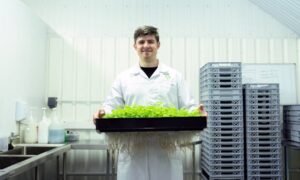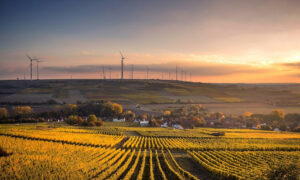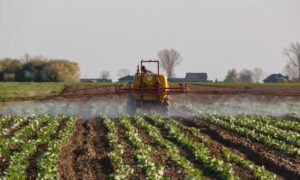In a world where bustling cities and cutting-edge technologies dominate the headlines, it’s all too easy to forget the humble origins of our existence: agriculture. From the ancient seeds sown by our ancestors to the vast fields that stretch out as far as the eye can see, this age-old practice has been nourishing nations since time immemorial. In today’s blog post, we embark on an insightful journey into the heartland of society, unveiling the crucial role that agriculture plays in sustaining not just our bellies but also our economies, cultures, and even identities. So grab your virtual pitchforks and join us as we till go through layers of history, innovation, challenges, and triumphs in this ode to one of humanity’s most vital endeavors: feeding a hungry world.
Introduction: What is Agriculture and its Impact on the World?
Agriculture is the process of producing food, feed, fiber, and other desired products by culturing plants and animals. The history of agriculture dates back thousands of years, and its impact on the world has been just as profound. Agriculture has played a key role in human civilization, shaping our social structures, economy, and even diet.
Today, agriculture continues to be a vital part of the global economy. It employs billions of people around the world and provides food for billions more. Agriculture also has a significant impact on the environment, both positive and negative. With modern technology and advances in sustainable practices, agriculture can be a force for good, helping to feed the world’s growing population while preserving our natural resources.
The Role of Agriculture in Ensuring Food Security
In a world where the population is ever-growing and the amount of arable land is limited, agriculture plays a crucial role in ensuring food security. Through efficient production practices and responsible land management, agriculture can help provide enough food for everyone while also protecting the environment.
As the world’s population continues to grow, so does the demand for food. Agriculture is essential for meeting this demand, as it is responsible for producing the majority of the world’s food supply. In order to feed everyone on a planet with limited resources, it is important that agriculture be as efficient and sustainable as possible.
Intensive farming practices have contributed to an increase in food production in recent years, but they have also had negative impacts on the environment. In order to sustainably feed the world’s growing population, agriculture must strike a balance between efficiency and environmental protection.
Agriculture plays a vital role in ensuring food security for both current and future generations. By responsibly producing enough food to meet global demand, we can ensure that everyone has enough to eat now and in the future.
How Agricultural Technologies are Advancing Farming Practices
In a world where the population is ever-growing and the demand for food is constantly increasing, it is more important than ever to produce food in a sustainable way. Agricultural technologies are helping to do just that.
From precision farming to vertical farming, there are many ways that farmers are using technology to increase yields and decrease inputs. Precision farming is all about using data to make better decisions about when and how to plant, irrigate, and fertilize crops. This results in less water and fertilizer being used and less waste being produced.
Vertical farming is another way that farmers are using technology to increase yields. In vertical farms, crops are grown in vertically stacked layers in a controlled environment. This allows for year-round production, even in places where traditional farming is not possible.
Both of these approaches to agriculture are helping to make food production more efficient and sustainable. As the world population continues to grow, it will be crucial to continue developing innovative agricultural technologies that can help feed the world in a sustainable way.
The Growing Need for Sustainable Agriculture
The world population is expected to reach 9.1 billion by 2050, and with that growth comes the need to increase food production by 70%. Agriculture is responsible for 80% of the world’s food supply, making it a crucial part of ensuring global food security. But our current system of agriculture is not sustainable. It is estimated that by 2050, agriculture will need to increase food production by 70% to meet the demands of a growing population while also conserving natural resources and combating climate change.
The challenge lies in finding ways to produce more food with less impact on the environment. This can be done through a variety of methods, such as using technology and data to improve efficiency, investing in smallholder farmers, and promoting agroforestry. Technology can help us become more efficient in the way we use inputs like water and fertilizer, and precision agriculture can help us target those inputs more specifically. Smallholder farmers are often overlooked when it comes to agricultural investments, but they play a vital role in producing food for their communities. And agroforestry—the practice of integrating trees into farming systems—can help restore degraded lands, provide complementary incomes for farmers, and promote biodiversity.
These are just some of the ways we can make agriculture more sustainable and better able to meet the needs of a growing population. With the right policies and investments in place, agriculture can be a powerful force for good in our fight against hunger and poverty.
Conclusion
It is clear that agriculture plays a crucial role in sustaining our society and nourishing nations. By providing food, goods, and services to the global population, it helps us stay healthy and move forward into a prosperous future. We must continue to recognize the importance of this industry and support its growth through sustainable practices that will benefit all of us for generations to come.



































